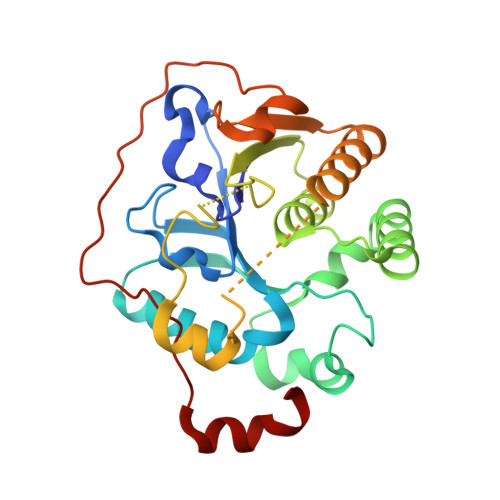Structural and Kinetic Analysis of Substrate Binding to the Sialyltransferase Cst-II from Campylobacter Jejuni.
Lee, H.J., Lairson, L.L., Rich, J.R., Lameignere, E., Wakarchuk, W.W., Withers, S.G., Strynadka, N.C.(2011) J Biological Chem 286: 35922
- PubMed: 21832050
- DOI: https://doi.org/10.1074/jbc.M111.261172
- Primary Citation of Related Structures:
2X61, 2X62, 2X63 - PubMed Abstract:
Sialic acids play important roles in various biological processes and typically terminate the oligosaccharide chains on the cell surfaces of a wide range of organisms, including mammals and bacteria. Their attachment is catalyzed by a set of sialyltransferases with defined specificities both for their acceptor sugars and the position of attachment. However, little is known of how this specificity is encoded. The structure of the bifunctional sialyltransferase Cst-II of the human pathogen Campylobacter jejuni in complex with CMP and the terminal trisaccharide of its natural acceptor (Neu5Ac-α-2,3-Gal-β-1,3-GalNAc) has been solved at 1.95 Å resolution, and its kinetic mechanism was shown to be iso-ordered Bi Bi, consistent with its dual acceptor substrate specificity. The trisaccharide acceptor is seen to bind to the active site of Cst-II through interactions primarily mediated by Asn-51, Tyr-81, and Arg-129. Kinetic and structural analyses of mutants modified at these positions indicate that these residues are critical for acceptor binding and catalysis, thereby providing significant new insight into the kinetic and catalytic mechanism, and acceptor specificity of this pathogen-encoded bifunctional GT-42 sialyltransferase.
- Department of Biochemistry and Molecular Biology, University of British Columbia, Vancouver, British Columbia V6T 1Z3; Centre for Blood Research, University of British Columbia, Vancouver, British Columbia V6T 1Z3.
Organizational Affiliation:





















